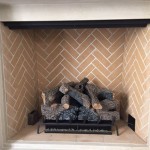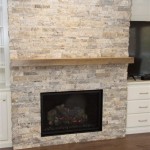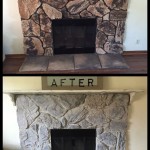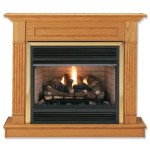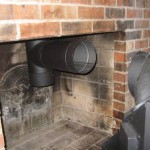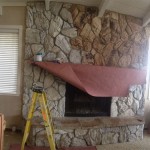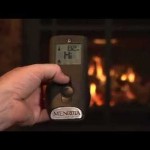Fireplace Inspection Checklist: Ensuring Safety and Efficiency
Fireplaces are a beloved feature in many homes, offering warmth, ambiance, and a cozy gathering space. However, their safety and efficiency rely on regular maintenance and inspections. A thorough fireplace inspection helps identify potential hazards and ensures that the fireplace is in good working order. This checklist provides a comprehensive guide to inspecting your fireplace, addressing crucial aspects to maintain its safety and functionality.
Chimney and Flue Inspection
The chimney and flue are the most critical components in a fireplace's safe operation. A blocked or damaged flue can result in smoke backdraft, carbon monoxide buildup, and even a fire hazard. Here's what to check:
- Visual Inspection: Look for cracks, loose bricks, mortar deterioration, and any signs of bird nests, animal intrusion, or debris buildup. Use a flashlight to illuminate the chimney interior.
- Chimney Sweep: Hire a certified chimney sweep to inspect the chimney's interior and remove creosote buildup, a highly flammable substance that accumulates from burning wood. Creosote inspection is essential for safety, as it reduces the risk of chimney fires.
- Damper Operation: Ensure the damper, which controls airflow in and out of the chimney, operates smoothly and is fully sealed when closed. A malfunctioning damper can lead to smoke backdraft and heat loss
- Spark Arrestor: Check the spark arrestor, a screen or mesh installed at the top of the chimney to prevent hot embers from escaping and igniting nearby materials. Ensure the spark arrestor is in good condition and free of blockages.
Firebox and Hearth Inspection
The firebox, where the fire burns, and the hearth, the area surrounding the fireplace, require careful inspection to ensure safety and functionality. Here's what to look for:
- Firebox Walls and Floor: Check for cracks, gaps, or loose bricks in the firebox walls and floor. These issues can compromise the integrity of the firebox and potentially lead to a fire hazard.
- Fireplace Grate: Inspect the fireplace grate, the metal frame that supports the burning wood. Ensure it's sturdy and securely in place. A weakened grate can collapse under the weight of logs, leading to potential injury or damage.
- Hearth and Surrounding Area: Examine the hearth and surrounding area for any signs of damage, such as cracks, chips, or burns. Ensure the hearth can withstand the heat generated by the fire and prevent accidental ignition of nearby flammable materials.
- Fireplace Screen: If you have a fireplace screen, inspect it for damage, wear, or gaps. Ensure it's in good condition and can effectively protect the surrounding area from sparks and embers.
Vent and Air Intake Inspection
Proper ventilation and air intake are crucial for a safe and efficient fireplace. Here's how to check these aspects:
- Vent and Ductwork: Inspect the vent and ductwork that connect the fireplace to the chimney for any blockages, leaks, or damage. Ensure airflow is unobstructed and the ductwork is securely connected to the fireplace and chimney.
- Air Intake: Check the air intake for the fireplace, which allows fresh air to fuel the fire. Ensure it's not blocked or restricted. Lack of fresh air can lead to inefficient burning and smoke backdraft.
- Combustion Air: Many modern fireplaces require adequate combustion air for proper operation. Ensure sufficient airflow to the combustion chamber, which is essential for efficient burning and minimizing smoke.
Additional Considerations for Fireplace Safety
Beyond the checklist elements, consider these additional aspects for optimal fireplace safety:
- Professional Inspection: While a DIY inspection is helpful, it's crucial to schedule professional inspections by a certified chimney sweep at least once a year. A professional can identify complex issues that might be missed during a visual inspection.
- Fireplace Tools: Ensure you have proper fireplace tools, including a poker, tongs, and a shovel, to safely manage the fire.
- Fireplace Maintenance: Regular maintenance, including cleaning the fireplace glass doors, ash removal, and inspecting the firebox, contributes significantly to its safety and efficiency.
- Fireplace Safety Devices: Consider installing fire safety devices, such as a carbon monoxide detector and a smoke detector, in the area surrounding the fireplace.

Blog Central Real Estate Inspections

20 Printable Home Inspection Checklists Word Template Lab Checklist Chimney

Free Chimney Inspection Checklist Safetyculture

14 Point Chimney Fireplace Inspection Exterior In Illinois

Chimney Sweeping Cleaning And Inspecting
Inspection Form Print Ready Indd

Home Fire Safety Inspection Checklist Randall County

Residential Inspection Checklist

Chimney Inspection Services In Columbus Ohio

Home Inspection Checklist House
Related Posts

